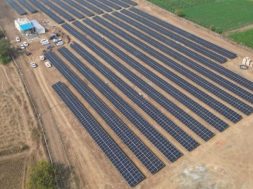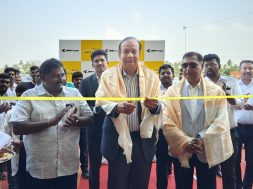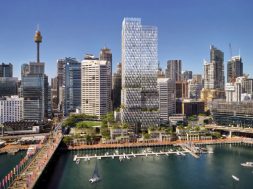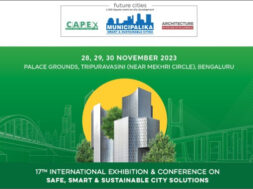Thermex Rebar Manufacturers’ Association (TRMA) has conducted its inaugural conference on 5th Mar in Mumbai. Organised in the theme of ‘Steel Reinforcement – myths and reality’; the event highlights the improper use of steel since 1972 and emphasizes on advantages of Thermex technology.
In his inaugural address, Franz Tamm, chief guest and inventor of Thermex quenching technology said, “When we have ventured into Indian market with the association of H&K India, we were quite surprised seeing the usage pattern of steel. But today, growing popularity in acceptance of Thermex rebars in India is encouraging. We must appreciate the efforts taken by TRMA in increasing awareness within the users segment”. According to Mr. Tamm, the Thermex technology was primarily developed in the aim of reducing mass of steel, and lowering labour costs.
Highlighting the growth story of Thermex; RK Markan, CMD of H&K India said, “In recent years, production of Thermex rebars in India has grown manifold. Thermex systems are installed worldwide, ranging from Asia, Australia, Europe, Russia, Africa, America, and the Indian sub-continent. In the Indian sub-continent, Thermex systems have already been commissioned in 128 steel mills, while 22 are currently under execution. Today, more than 60 per cent of the steel reinforcement bars produced in India are Thermex rebars. A total of 154 Thermex systems have been ordered on H&K India alone”.
In his presentation, Mr. Markan describes the period 1970 – 2000 as the worst part for the steel industry in India as all construction used Grade Fe 415 deformed bars made by the ‘cold twisted’ process even though the use of CTD bars in RCC works was prohibited in Europe since 1972. He said, “Since 1985, Thermex rebars have taken over with higher yield strength, better ductility and corrosion resistance properties than the CTD rebars”.
Globally, Thermex is the most used rebars systems for construction and it is of great significance in India to meet increasing demand for infrastructural projects. According to Mr. Markan, “Thermex is an extremely viable option. Since Thermex was specifically developed to provide highly ductile rebars with yield strengths of 500 MPa, the country can save about 10 per cent in steel used, as compared to the poor quality Fe 415 CTD bars”.
Shravan Agarwal, Secretary, TRMA said, “As today there are a large number of licensed producers produce Thermex in India, we have decided to come together to form TRMA for increasing awareness within the civil engineering community”.
Hiranandani group was one of the front-runners in using Thermex rebars for their construction. Present at the event, Surendra Hiranandani, Managing Director, Hiranandani group shares his experiences about the new era in construction that began with the use of Thermex rebars and appreciated the efforts of Mr. Markan in pioneering this technology.
Although Thermex rebars are produced by 128 different steel plants or companies, great effort is made to ensure consistency in quality. Structural engineer Chetan Raikar, CMD of Structwel who undertakes third party audit for Thermex rebars declares, “Around 99 per cent samples received from various sites give similar kind of parameters. That proves the quality control of Thermex rebars”. Satish Dhupelia, President, ICACI (India Chapter of American Concrete Institute) highlights the evolution of rebars in India and urged the Thermex manufacturers indicate brand name, grade of steel and mark ‘Thermex’ on rebars to avoid ambiguity. On this occasion, the symbol for Thermex was also unveiled. Now, the structural engineers can use the new symbol in all their project drawings/designs to specify use of Thermex rebars.
GR Madan, Director (MRTS), MMRDA was also present at the event. The representatives from MMRDA, CIDCO, MCGM, Indian Society of Structural Engineers, India Chapter of American Concrete Institute, Association of Consulting Civil Engineers, Larsen & Toubro, Hiranandani Group, Nuclear Power Corporation of India, and several structural engineers have attended.
4 key points discussed:
• India’s continued used of improper Cold Twisted Deformed (CTD) rebars in construction activity since 1972. While such rebars were discontinued in Europe almost 40 years ago, many Indian builders continue to use these improper rebars in their current projects
• India’s need for high-strength and high-ductility rebars because 60 per cent of India (Mumbai, Thane, Kutch, Delhi and many other parts of North and North-East India) lies in the high-hazard seismic zones 3, 4 and 5
• Myths surrounding rebars such as Earthquake Resistant Steel bars, X-pattern ribs etc.
• Potential savings of Rs. 8,000 crore per year if India switches from the rebars it has been using since 1972 to today’s high-strength and high-ductility rebars such as Thermex Grade500 that are easily available across the country
Attentions were drawn to:
• Production of spurious ‘TMT’ steel reinforcement bars. The speakers regretted that the new Indian Standard (IS):1786-2008 gave a license for use of improper TMT quenching technology by stating that non-uniform peripheral quenching was not a ground for rejection
• 70-year old buildings on Mumbai’s Marine Drive continue to stand tall, while newer stories built atop the same buildings using CTD steel rebars need repair within 5-6 years, testifying to CTD’s poor performance. Even so, many Indian builders continue to use CTD rebars
• Need for IS to specify the same level of high ductility for rebars irrespective of the Yield Strength, as is specified in the codes of European countries
• Need for IS to specify higher values of elongation and stress ratio for rebars to be used in earthquake prone areas
• IS code gives importance to elongation at fracture instead of uniform elongation of rebar. This poses a grave risk to residents of buildings in high seismic hazard places. Many countries have already shifted to uniform elongation since the past 5 years which is considered as the correct option
• Many expressed surprise that different chemical compositions were specified for 7 differing rebar grades in the code
35
Cookie Consent
We use cookies to personalize your experience. By continuing to visit this website you agree to our Terms & Conditions, Privacy Policy and Cookie Policy.









